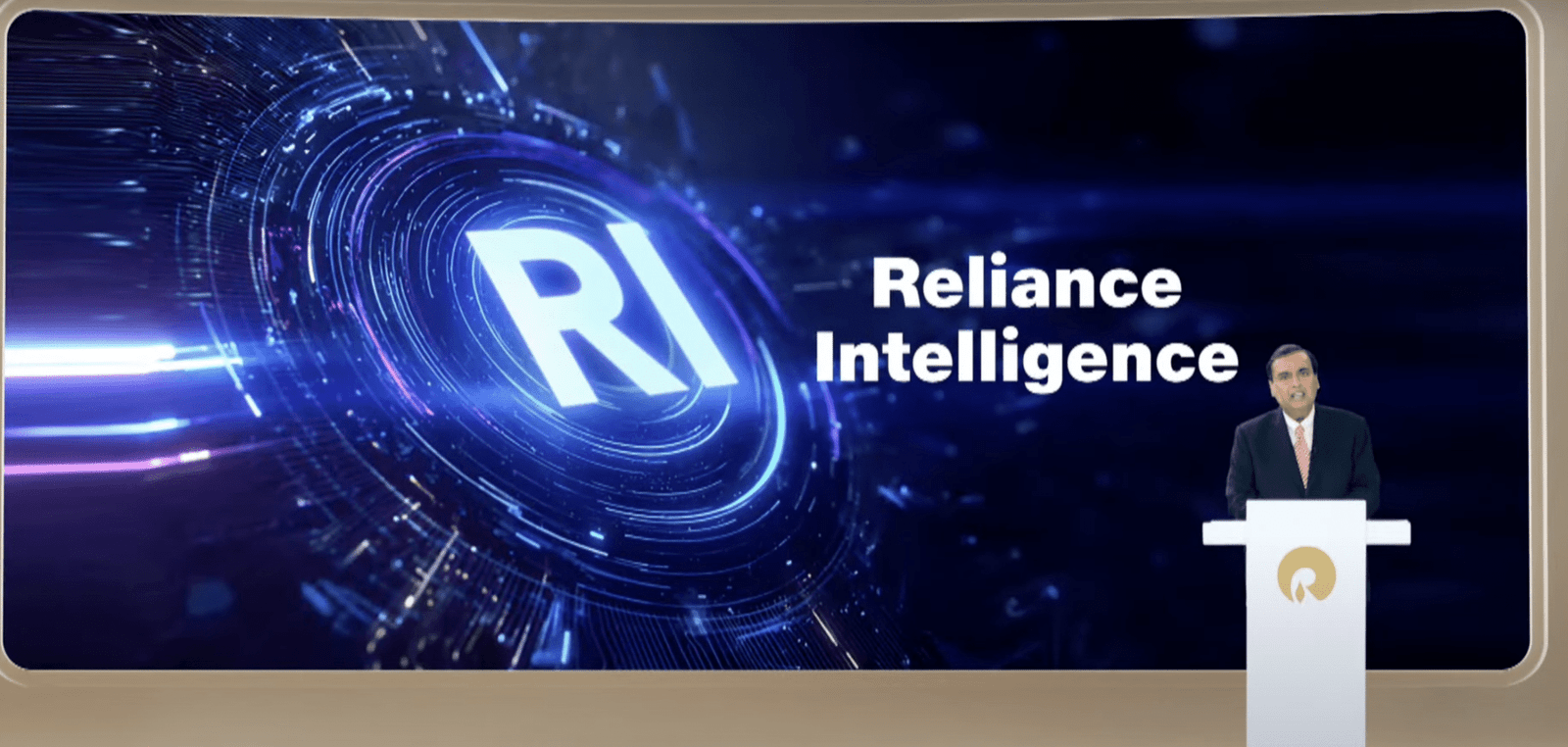Jobs & Careers
Top Skills Data Scientists Should Learn in 2025


Image by Author | Canva
# Introduction
I understand that with the pace at which data science is growing, it’s getting harder for data scientists to keep up with all the new technologies, demands, and trends. If you think that knowing Python and machine learning will get the job done for you in 2025, then I’m sorry to break it to you but it won’t.
To have a good chance in this competitive market, you will have to go beyond the basic skills.
I’m not only referring to tech skills but also the soft skills and business understanding. You might have come across such articles before, but trust me this is not a clickbait article. I HAVE actually done research to highlight those areas which are often overlooked. Please note that these recommendations are purely based on industry trends, research papers, and insights I gathered from talking to a few experts. So, let’s get started.
# Technical Skills
// 1. Graph Analytics
Graph analytics is super underrated but so useful. It helps you understand relationships in data by turning them into nodes and edges. Fraud detection, recommendation systems, social networks, or anywhere things are connected, graphs can be applied. Most traditional machine learning models struggle with relational data, but graph techniques make it easier to catch patterns and outliers. Companies like PayPal use it to identify fraudulent transactions by analyzing relationships between accounts. Tools like Neo4j, NetworkX, and Apache AGE can help you visualize and work with this kind of data. If you’re serious about going deeper into areas like finance, cybersecurity, and e-commerce, this is one skill that’ll make you stand out.
// 2. Edge AI Implementation
Edge AI is basically about running machine learning models directly on devices without relying on cloud servers. It’s super relevant now that everything from watches to tractors is getting smart. Why does this matter? It means faster processing, more privacy, and less dependency on internet speed. For example, in manufacturing, sensors on machines can predict failures before they happen. John Deere uses it to detect crop diseases in real-time. In healthcare, wearables process data instantly without needing a cloud server. If you’re interested in Edge AI, look into TensorFlow Lite, ONNX Runtime, and protocols like MQTT and CoAP. Also, think about Raspberry Pi and low-power optimization. According to Fortune Business Insights,Edge AI market will grow from USD 27.01 billion in 2024 to USD 269.82 billion by 2032 so yeah, it’s not just hype.
// 3. Algorithm Interpretability
Let’s be real, building a powerful model is cool, but if you can’t explain how it works? Not that cool anymore. Especially in high-stakes industries like healthcare or finance, where explainability is a must. Tools like SHAP and LIME help break down decisions from complex models. For example, in healthcare, interpretability can highlight why an AI system flagged a patient as high-risk, which is critical for both ethical AI use and regulatory compliance. And sometimes it’s better to build something inherently interpretable like decision trees or rule-based systems. As Cynthia Rudin, an AI researcher at Duke University, puts it: “Stop explaining black box machine learning models for high stakes decisions and use interpretable models instead.” In short, if your model affects real people, interpretability isn’t optional, it’s essential.
// 4. Data Privacy, Ethics, and Security
This stuff isn’t just for legal teams anymore. Data scientists need to understand it too. One wrong move with sensitive data can lead to lawsuits or fines. With privacy laws like CCPA and GDPR, it’s now expected that you know about techniques like differential privacy, homomorphic encryption, and federated learning. Ethical AI is also getting serious attention. In fact, 78% of surveyed consumers believe companies must commit to ethical AI standards, and 75% say trust in a company’s data practices directly influences their purchasing decisions. Tools like IBM’s Fairness 360 can help you test bias in datasets and models. TL;DR: If you’re building anything that uses personal data, you better know how to protect it, and explain how you’re doing that.
// 5. AutoML
AutoML tools are becoming a solid asset for any data scientist. They automate tasks like model selection, training, and hyperparameter tuning, so you can focus more on the actual problem, rather than getting lost in repetitive tasks. Tools like H2O.ai, DataRobot, and Google AutoML help speed things up a lot. But don’t get it twisted, AutoML isn’t about replacing you, it’s about boosting your workflow. AutoML is a copilot, not the pilot. You still need the brains and context, but this can handle the grunt work.
# Soft Skills
// 1. Environmental Awareness
This might surprise some, but AI has a carbon footprint. Training massive models takes up crazy amounts of energy and water. As a data scientist, you have a role in making tech more sustainable. Whether it’s optimizing code, choosing efficient models, or working on green AI projects, this is a space where tech meets purpose. Microsoft’s “Planetary Computer” is a great example of using AI for environmental good. As MIT Technology Review puts it: “AI’s carbon footprint is a wake-up call for data scientists.” In 2025, being a responsible data scientist includes thinking about your environmental impact as well.
// 2. Conflict Resolution
Data projects often involve a mix of people: engineers, product folks, business heads, and trust me, not everyone will agree all the time. That’s where conflict resolution comes in. Being able to handle disagreements without stalling progress is a big deal. It ensures that the team stays focused and moves forward as a unified group. Teams that can resolve conflicts efficiently are simply more productive. Agile thinking, empathy, and being solution-oriented are huge here.
// 3. Presentation Skills
You could build the most accurate model in the world, but if you can’t explain it clearly, it’s not going anywhere. Presentation skills especially explaining complex ideas in simple terms are what separate the great data scientists from the rest. Whether you’re talking to a CEO or a product manager, how you communicate your insights matters. In 2025, this isn’t just a “nice to have”, it’s a core part of the job.
# Industry-Specific Skills
// 1. Domain Knowledge
Understanding your industry is key. You don’t need to be a finance expert or a doctor, but you do need to get the basics of how things work. This helps you ask better questions and build models that actually solve problems. For example, in healthcare, knowing about medical terminology and regulations like HIPAA makes a huge difference in building trustworthy models. In retail, customer behavior and inventory cycles matter. Basically, domain knowledge connects your technical skills to real-world impact.
// 2. Regulatory Compliance Knowledge
Let’s face it, data science is no longer a free-for-all. With GDPR, HIPAA, and now the EU’s AI Act, compliance is becoming a core skill. If you want your project to go live and stay live, you need to understand how to build with these regulations in mind. A lot of AI projects are delayed or blocked just because no one thought about compliance from the start. With 80% of AI projects in finance facing compliance delays, knowing how to make your systems auditable and regulation-friendly gives you a serious edge.
# Wrapping Up
This was my breakdown based on the research I’ve been doing lately. If you’ve got more skills in mind or insights to add, I’d honestly love to hear them. Drop them in the comments below. Let’s learn from each other.
Kanwal Mehreen is a machine learning engineer and a technical writer with a profound passion for data science and the intersection of AI with medicine. She co-authored the ebook “Maximizing Productivity with ChatGPT”. As a Google Generation Scholar 2022 for APAC, she champions diversity and academic excellence. She’s also recognized as a Teradata Diversity in Tech Scholar, Mitacs Globalink Research Scholar, and Harvard WeCode Scholar. Kanwal is an ardent advocate for change, having founded FEMCodes to empower women in STEM fields.
Jobs & Careers
NVIDIA Reveals Two Customers Accounted for 39% of Quarterly Revenue

NVIDIA disclosed on August 28, 2025, that two unnamed customers contributed 39% of its revenue in the July quarter, raising questions about the chipmaker’s dependence on a small group of clients.
The company posted record quarterly revenue of $46.7 billion, up 56% from a year ago, driven by insatiable demand for its data centre products.
In a filing with the U.S. Securities and Exchange Commission (SEC), NVIDIA said “Customer A” accounted for 23% of total revenue and “Customer B” for 16%. A year earlier, its top two customers made up 14% and 11% of revenue.
The concentration highlights the role of large buyers, many of whom are cloud service providers. “Large cloud service providers made up about 50% of the company’s data center revenue,” NVIDIA chief financial officer Colette Kress said on Wednesday. Data center sales represented 88% of NVIDIA’s overall revenue in the second quarter.
“We have experienced periods where we receive a significant amount of our revenue from a limited number of customers, and this trend may continue,” the company wrote in the filing.
One of the customers could possibly be Saudi Arabia’s AI firm Humain, which is building two data centers in Riyadh and Dammam, slated to open in early 2026. The company has secured approval to import 18,000 NVIDIA AI chips.
The second customer could be OpenAI or one of the major cloud providers — Microsoft, AWS, Google Cloud, or Oracle. Another possibility is xAI.
Previously, Elon Musk said xAI has 230,000 GPUs, including 30,000 GB200s, operational for training its Grok model in a supercluster called Colossus 1. Inference is handled by external cloud providers.
Musk added that Colossus 2, which will host an additional 550,000 GB200 and GB300 GPUs, will begin going online in the coming weeks. “As Jensen Huang has stated, xAI is unmatched in speed. It’s not even close,” Musk wrote in a post on X.Meanwhile, OpenAI is preparing for a major expansion. Chief Financial Officer Sarah Friar said the company plans to invest in trillion-dollar-scale data centers to meet surging demand for AI computation.
The post NVIDIA Reveals Two Customers Accounted for 39% of Quarterly Revenue appeared first on Analytics India Magazine.
Jobs & Careers
‘Reliance Intelligence’ is Here, In Partnership with Google and Meta

Reliance Industries chairman Mukesh Ambani has announced the launch of Reliance Intelligence, a new wholly owned subsidiary focused on artificial intelligence, marking what he described as the company’s “next transformation into a deep-tech enterprise.”
Addressing shareholders, Ambani said Reliance Intelligence had been conceived with four core missions—building gigawatt-scale AI-ready data centres powered by green energy, forging global partnerships to strengthen India’s AI ecosystem, delivering AI services for consumers and SMEs in critical sectors such as education, healthcare, and agriculture, and creating a home for world-class AI talent.
Work has already begun on gigawatt-scale AI data centres in Jamnagar, Ambani said, adding that they would be rolled out in phases in line with India’s growing needs.
These facilities, powered by Reliance’s new energy ecosystem, will be purpose-built for AI training and inference at a national scale.
Ambani also announced a “deeper, holistic partnership” with Google, aimed at accelerating AI adoption across Reliance businesses.
“We are marrying Reliance’s proven capability to build world-class assets and execute at India scale with Google’s leading cloud and AI technologies,” Ambani said.
Google CEO Sundar Pichai, in a recorded message, said the two companies would set up a new cloud region in Jamnagar dedicated to Reliance.
“It will bring world-class AI and compute from Google Cloud, powered by clean energy from Reliance and connected by Jio’s advanced network,” Pichai said.
He added that Google Cloud would remain Reliance’s largest public cloud partner, supporting mission-critical workloads and co-developing advanced AI initiatives.
Ambani further unveiled a new AI-focused joint venture with Meta.
He said the venture would combine Reliance’s domain expertise across industries with Meta’s open-source AI models and tools to deliver “sovereign, enterprise-ready AI for India.”
Meta founder and CEO Mark Zuckerberg, in his remarks, said the partnership is aimed to bring open-source AI to Indian businesses at scale.
“With Reliance’s reach and scale, we can bring this to every corner of India. This venture will become a model for how AI, and one day superintelligence, can be delivered,” Zuckerberg said.
Ambani also highlighted Reliance’s investments in AI-powered robotics, particularly humanoid robotics, which he said could transform manufacturing, supply chains and healthcare.
“Intelligent automation will create new industries, new jobs and new opportunities for India’s youth,” he told shareholders.
Calling AI an opportunity “as large, if not larger” than Reliance’s digital services push a decade ago, Ambani said Reliance Intelligence would work to deliver “AI everywhere and for every Indian.”
“We are building for the next decade with confidence and ambition,” he said, underscoring that the company’s partnerships, green infrastructure and India-first governance approach would be central to this strategy.
The post ‘Reliance Intelligence’ is Here, In Partnership with Google and Meta appeared first on Analytics India Magazine.
Jobs & Careers
Cognizant, Workfabric AI to Train 1,000 Context Engineers

Cognizant has announced that it would deploy 1,000 context engineers over the next year to industrialise agentic AI across enterprises.
According to an official release, the company claimed that the move marks a “pivotal investment” in the emerging discipline of context engineering.
As part of this initiative, Cognizant said it is partnering with Workfabric AI, the company building the context engine for enterprise AI.
Cognizant’s context engineers will be powered by Workfabric AI’s ContextFabric platform, the statement said, adding that the platform transforms the organisational DNA of enterprises, how their teams work, including their workflows, data, rules, and processes, into actionable context for AI agents.Context engineering is essential to enabling AI a
-
Tools & Platforms3 weeks ago
Building Trust in Military AI Starts with Opening the Black Box – War on the Rocks
-

 Business2 days ago
Business2 days agoThe Guardian view on Trump and the Fed: independence is no substitute for accountability | Editorial
-

 Ethics & Policy1 month ago
Ethics & Policy1 month agoSDAIA Supports Saudi Arabia’s Leadership in Shaping Global AI Ethics, Policy, and Research – وكالة الأنباء السعودية
-

 Events & Conferences3 months ago
Events & Conferences3 months agoJourney to 1000 models: Scaling Instagram’s recommendation system
-

 Jobs & Careers2 months ago
Jobs & Careers2 months agoMumbai-based Perplexity Alternative Has 60k+ Users Without Funding
-

 Education2 months ago
Education2 months agoVEX Robotics launches AI-powered classroom robotics system
-

 Funding & Business2 months ago
Funding & Business2 months agoKayak and Expedia race to build AI travel agents that turn social posts into itineraries
-

 Podcasts & Talks2 months ago
Podcasts & Talks2 months agoHappy 4th of July! 🎆 Made with Veo 3 in Gemini
-

 Podcasts & Talks2 months ago
Podcasts & Talks2 months agoOpenAI 🤝 @teamganassi
-

 Jobs & Careers2 months ago
Jobs & Careers2 months agoAstrophel Aerospace Raises ₹6.84 Crore to Build Reusable Launch Vehicle

